#christopher rothko
Explore tagged Tumblr posts
Text
As Rothko continues his exploration of Renaissance painting in The Artist's Reality, he lands upon questions that will eventually help push him toward his universal language of abstraction. He sees a second problem stemming from that epoch's loss of unity, a trend toward 'particularization', that is, the tendency to look at the world as a series of individual truths that do not necessarily add up to anything larger or more broadly relevant. This was expressed artistically in the increased depiction of individuals and objects that were ends in themselves, from which no longer generalization could be made. While this phenomenon is perhaps most obvious in the case of a genre such as still life, Rothko would argue that the increasing focus on work even as fundamental as portraiture was no less symptomatic of the problem. Without a broadly held societal worldview, the artist might capture psychological truths, but these were always one step removed from a larger truth, that is, from the expression of an understanding of the world, which for Rothko was the reason for the creation of art.
Christopher Rothko ֍ "Rothko and the Resonance of History." Toward Clarity (2019)
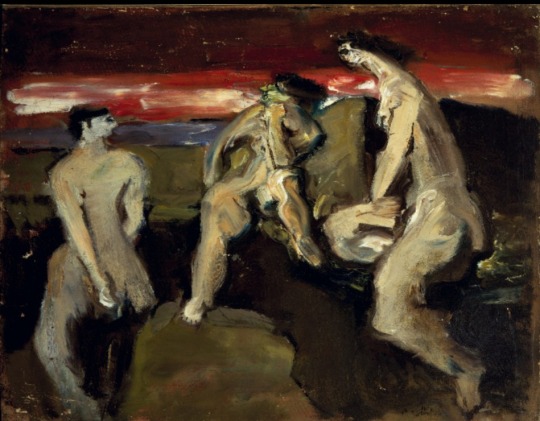
Mark Rothko ֍ Bathers / Bath Scene (1933-4)
#christopher rothko#mark rothko#rothko and the resonance of history#toward clarity#bookshelf#quotes#bathers / bath scene#gallery#art#painting
11 notes
·
View notes
Text
Rothko's book aside, it would be tempting to look at his classic abstractions as a revolutionary departure from the art that came before: the bold washes of saturated color, the striking reduction of form, the expansive all-over painting which appears to supersede the edges of its own canvas. And yet, as he makes clear repeatedly throughout the text, there can be no such thing as a revolution in art. The 'plastic process', as he labels it—is inherently evolutionary. An artist can react against it, but there is no way to be outside it; it is the fabric with which he or she weaves.
Christopher Rothko ǁ “Rothko and the Resonance of History.” Toward Clarity (2019)

Mark Rothko ǁ Untitled (1950)
#christopher rothko#rothok and the resonance of history#toward clarity#bookshelf#quotes#mark rothko#gallery#art#painting
8 notes
·
View notes
Photo
via Gridllr.com — like Mega-Editor for your Likes!

#blue#mark rothko#abstract expressionism#color field#art#abstract art#modern art#painting#Mark Rothko#Untitled#1969#1998 Kate Rothko Prizel#Christopher Rothko#Artists Rights Society
22K notes
·
View notes
Text
Watch "Christopher Rothko - Mark Rothko and the inner World" on YouTube
youtube
#mark rothko#idamariapan#idealeconcepts#monacoion#WordsInLineSpaceAndTime#idealistamagica#impXYZ#FFFXYZ#Flegra#Rothko#Christopher#art#museums#history#inner world#Kunst#WILST#lumiere#light and shadow#colors#spirit#Psychology#psycho analysis#outer space#attimi#LaManoNonMente#Wittgenstein#pensieri e parole#in COR ni ce#video
1 note
·
View note
Text

𝗠𝗔𝗥𝗞 𝗥𝗢𝗧𝗛𝗞𝗢
Untitled (Red, Yellow, Blue), 1953 © Kate Rothko Prizel and Christopher Rothko/ ARS
38 notes
·
View notes
Text

Mark Rothko, "Black On Maroon," 1958,
Oil on canvas. 266.7 x 365.7 cm.
Tate, Londres. Presented by the artist through American,
Foundation of Arts, 1969,
© 1998 Kate Rothko Prizel & Christopher Rothko - Adagp, Paris, 2023.
#art#abstract#abstraction#forms#painting#abstractart#minimal#minimalism#mark rothko#abstract expressionism#black#maroon#1958#tate
25 notes
·
View notes
Photo

Mark Rothko, Untitled, 1968 Acrylic on watercolor paper Watermark-THSaunders: THSAUNDERS ENGLAND 40 3/8 x 27 in. (102.6 x 68.6 cm) InscriptionVerso: MARK ROTHKO 1968 Estate/Inventory Number1182.68 CollectionNational Gallery of Art, Gift of The Mark Rothko Foundation, Inc., 1986.43.243. © Kate Rothko Prizel and Christopher Rothko
5 notes
·
View notes
Text

𝗠𝗔𝗥𝗞 𝗥𝗢𝗧𝗛𝗞𝗢, Untitled, 1952 Ink on bond paper 11 x 8 9/16 in. (27.9 x 21.7 cm) Collections of Kate Rothko Prizel and Christopher Rothko.
27 notes
·
View notes
Text
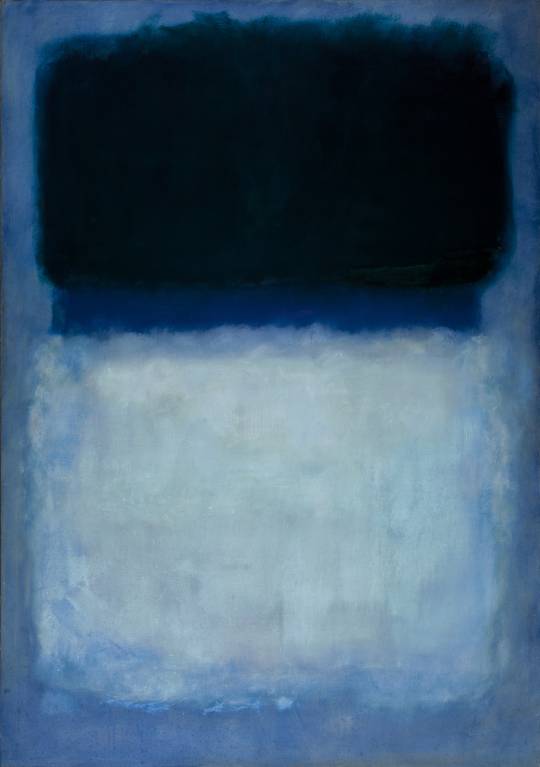
Mark Rothko: Green on Blue (Earth-Green and White), 1956. Oil on canvas. © 1998 Kate Rothko Prizel & Christopher Rothko/Adagp, Paris, 2023. via Vogue
63 notes
·
View notes
Text

Mark Rothko, Untitled, 1969
Acrylic on wove paper
50 1/4 x 42 1/4 in. (127.5 x 107.2 cm)
Estate/Inventory Number2106.69
Collection of Kate Rothko Prizel. © Kate Rothko Prizel and Christopher Rothko
NGA
6 notes
·
View notes
Text
Like the poet and the philosopher, the artist 'deal[s] with the verities of time and space, life and death, and the heights of exaltation as well as the depths of despair'. And like that of the poet and the philosopher, it is the artist's role to encompass the world around him and reduce its most salient aspects to a core truth (a 'generalization') that applies to all. Unlike philosophers, however artists do this by speaking the language of the senses; that is, they communicate their ideas through what is essentially bodily stimulation:
[The artist] tries to give human beings direct contact with eternal verities through reduction of those verities to the realm of sensuality, which is the basic language for the human experience of all things.
Christopher Rothko ֍ "Rothko and the Resonance of History." Toward Clarity (2019)
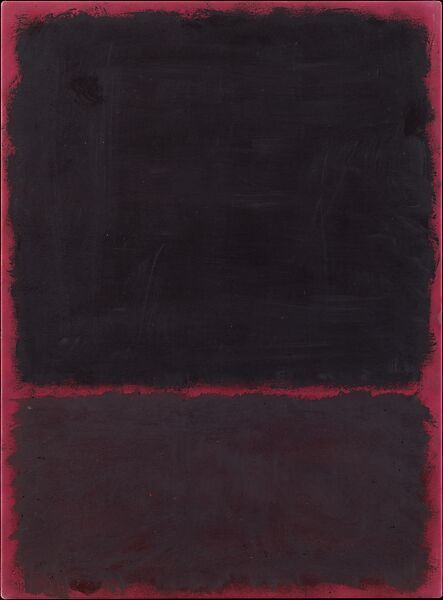
Mark Rothko ֍ Untitled (1967)
#christopher rothko#mark rothko#rothko and the resonance of history#toward clarity#bookshelf#quotes#gallery#painting
12 notes
·
View notes
Text
Perhaps because his paintings seem forever shrouded in a sense of mystery, of meaning always tantalizingly just out of reach, Rothko's essential character has remained elusive and at times misunderstood. Seldom one to speak about himself or even about his work, this artist, who famously 'preferred to tell little' and eschewed 'self-expression' in his work, directed us to keep our eyes focused on his canvases and not be distracted by anecdotes of the personal. He sought to take us away from the everyday and move us toward the abstract, the universal, the larger truths. This was the plane of consciousness that was so often drowned out by the social, the commercial, the particular. And yet, this is the artist who wanted his viewer 'to have the same religious experience he had when painting it' with each of his works. Could there be a more direct personal connection? Indeed, who has stood before a classic Rothko painting and not found it suffused with the emotional presence of the man who made it?
Christopher Rothko ǁ "Rothko and the Resonance of History." Toward Clarity (2019)
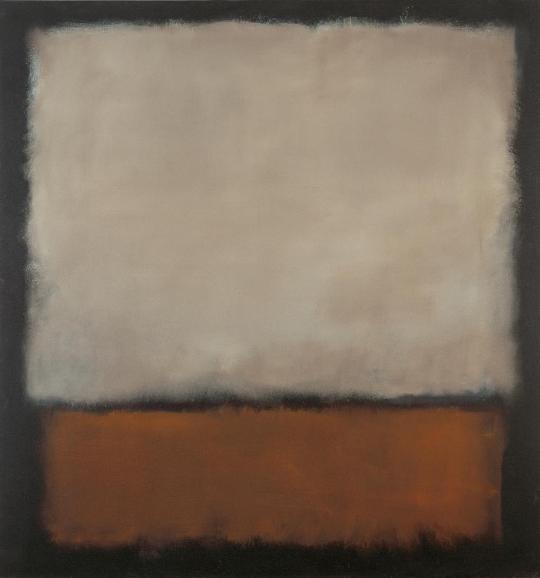
Mark Rothko ǁ No. 7 (Dark Brown, Gray, Orange) (1963)
#christopher rothko#rothko and the resonance of history#bookshelf#quotes#no. 7#dark brown gray orange#gallery#painting#art#toward clarity
3 notes
·
View notes
Text

Mark Rothko Untitled, c. 1968 on paper © Kate Rothko Prizel & Christopher Rothko / ARS, New York
#mark rothko#markrothko#rothko#daily rothko#dailyrothko#abstract expressionism#modern art#abstraction#colorfield#ab ex#colorfield painting#mid century#1968
667 notes
·
View notes
Text

Mark Rothko, (2023) “The Artist’s Reality: Philosophies of Art”. Yale University Press.
(*) “Mark Rothko’s classic book on artistic practice, ideals, and philosophy, now with an expanded introduction and an afterword by Makoto Fujimura
Stored in a New York City warehouse for many years after the artist’s death, this extraordinary manuscript by Mark Rothko (1903–1970) was published to great acclaim in 2004. Probably written in 1940 or 1941, it contains Rothko’s ideas on the modern art world, art history, myth, beauty, the challenges of being an artist in society, the true nature of “American art,” and much more.
In his introduction, illustrated with examples of Rothko’s work and pages from the manuscript, the artist’s son, Christopher Rothko, describes the discovery of the manuscript and the fascinating process of its initial publication. This edition includes discussion of Rothko’s “Scribble Book” (1932), his notes on teaching art to children, which has received renewed scholarly attention in recent years and provides clues to the genesis of Rothko’s thinking on pedagogy.
In an afterword written for this edition, artist and author Makoto Fujimura reflects on how Rothko’s writings offer a “lifeboat” for “art world refugees” and a model for upholding artistic ideals. He considers the transcendent capacity of Rothko’s paintings to express pure ideas and the significance of the decade-long gap between The Artist’s Reality and Rothko’s mature paintings, during which the horrors of the Holocaust and the atomic bomb were unleashed upon the world.”
2 notes
·
View notes
Text
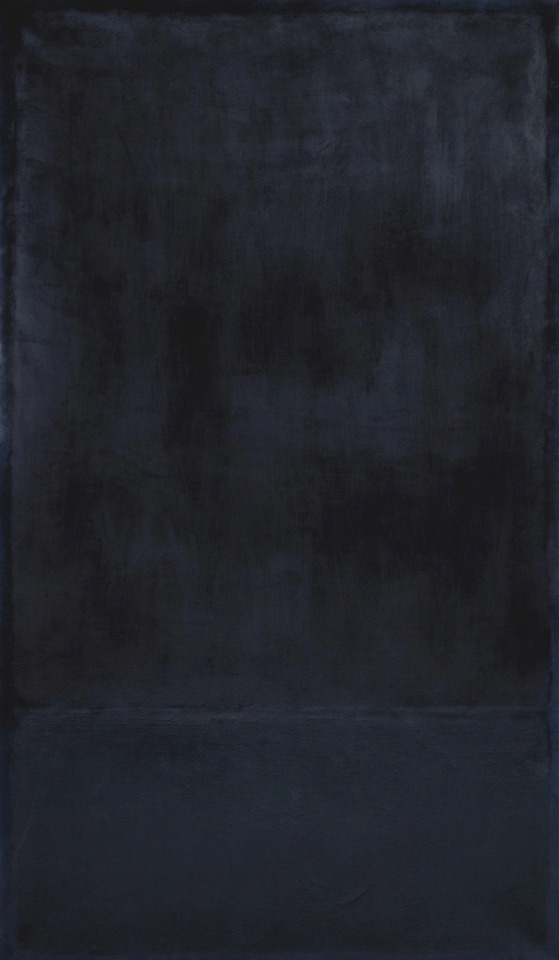
Mark Rothko, Untitled, 1969
© 1998 Kate Rothko Prizel & Christopher Rothko/Artists Rights Society (ARS)
10 notes
·
View notes
Text
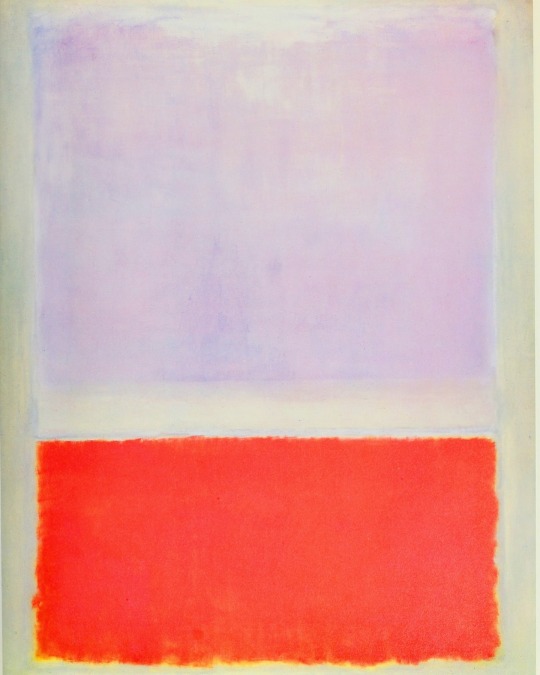
Mark Rothko
Untitled (Lilac and orange over ivory), 1953 Toledo Museum of Art © 1998 Kate Rothko Prizel & Christopher Rothko /Artists Rights Society (ARS)
21 notes
·
View notes